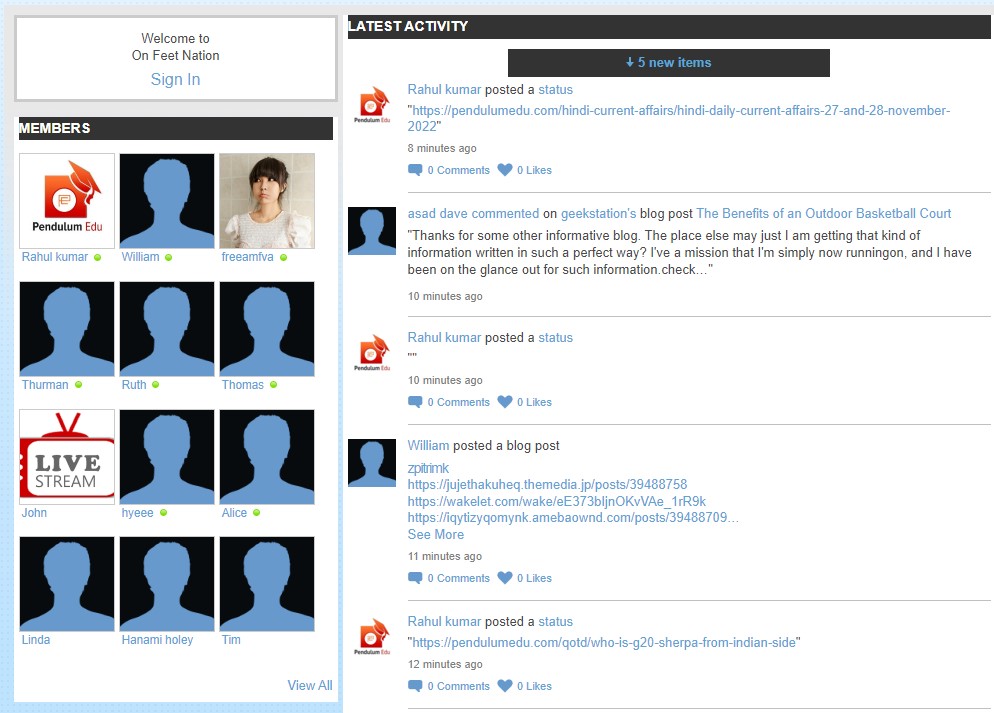The results are surprising, Quality Score and Cost Per Click are more clearly correlated when you look at Exact Match keywords.
close

The term "backlink" is the common name for an HTML tag that specifies a hyperlink anchor and target web resource. The term backlink generally applies to URLs.
Backlinks are expressed as follows.
<a href=”domain.com”>What is a backlink anchor text</a>There are several types of backlinks, including do-follow, no-follow, and sponsored.
Modifying the HTML tag to include a "rel" tag changes how search engines interpret the backlink.
A no-follow link is expressed as follows.
<a href=”domain.com” rel=”nofollow”>What is a backlink anchor text</a>The difference is minor; A Universal Resource Identifier (URI) is a string of characters uniquely identifying a resource. This could include a link, a file path, or a book's ID number.
URLs, or Uniform Resource Locators, are a specific type of URI. URLs are used to identify, access, and transfer digital information over the internet that specify the location of a web resource within a network.
Backlinks are a subset of URLs. The term backlink refers to HTML tags that reference web resources.
Backlinks are critical SEO factors, measuring a website's authority and popularity. They are created when other websites link to your website or webpage, indicating that they consider your content valuable and worth sharing.
In theory, backlinks help determine the importance of a given page based on the number of citations or links a web page receives.
In addition, backlinks are vital in calculating Bing, Yahoo, Baidu, and Google rankings.
Several different types of backlinks can help increase your content's visibility. Some of the most valuable links include do-follow links, which indicate that a website considers your content valuable and worth sharing with its audience.
Most backlinks are valuable, but the value varies depending on the associated tags and location on the webpage. Links in the comments of a blog are almost always worthless. At the same time, links in the body of a homepage are almost always valuable - a prominent link can pass traffic even if the link is no-follow. A no-follow link from a site like the Better Business Bureau that increases a site's trust is precious because it includes your entire site's EEAT.
High-quality backlinks from reputable sites can significantly boost your search engine rankings. In contrast, low-quality backlinks from spammy or low-quality websites can negatively impact your SEO.
A do-follow link is a backlink that tells search engine crawlers to follow and index the linked-to page.
Do follow links require no additional notation and often do not include a "rel" tag. Do-follow links are the default HTML tag.
<a href=”domain.com”>What is a backlink anchor text</a>Similar to the no-follow attribute, links from paid placements, such as advertorials, affiliate posts, and ads should include a rel="sponsored" tag.
<a rel=”sponsored” href=”domain.com”>What is a backlink anchor text</a>If you're linking to the comments of a blog or forum, then the link should be noted.
<a rel=”ugc” href=”domain.com”>What is a backlink anchor text</a>A no follow link is marked with rel="nofollow" in the HTML tag.
The no-follow tag tells search engines not to pass link equity. The tag may or may not be honored by search engines. Generally, one would use this tag to mark links that are not intended to pass link equity.
<a rel=”nofollow” href=”domain.com”>What is a backlink anchor text</a>Most sites mark links in the comments as no-follow, and most social posts are marked no-follow.
No-follow links have anchor text and can pass traffic, so they are widely seen as valuable even if they may not give link equity.
A practical use case for a no-follow link could be on a directory site or partnership page. Directory sites like the American Bar Association, American Medical Association, FINRA, and institutional directories serve legitimate purposes. They help establish credibility and trust among professionals who require professional certifications; professional directory sites are used to make those certifications easily verifiable and are often mandated by law.
Yet, according to Google's guidelines, Google may unknowingly consider a given directory listing as a form of link spam.
See one of Google's definitions below.
Low-quality directory or bookmark site links
Link-Spam Guidelines
The benefit of adding a no-follow link to directories signals to search engines that the directory does not exist to manipulate rankings - and, therefore, should not be considered spam.
Domain authority is a metric created by MOZ and used by SEOs to determine how authoritative a website is purely based on its link profile. It is determined by assessing several factors, such as the number and quality of a site's backlinks.
To improve their domain authority, sites can focus on building high-quality links and creating valuable content that will encourage others to link to them.
Quality is always more important than quantity. Therefore, a website with many high-quality backlinks is likely to have a higher domain authority than one with a small number of high-quality backlinks.
Interestingly, a site can have a very high DA and, at the same time, be a spam site.
For example, the site OnFeetNation has a Domain Rating is 52 and a 12% spam score. Yet the site is entirely composed of low-quality content, and the entire site only receives 10 organic visits per month.
DA alone would not help qualify a given link as high-quality.



Several metrics can be used to evaluate backlinks for relevance, such as the subjective topical relevance of a site or a webpage.
One standard measurement is to use some variant of the page authority or the authority of a domain.
Another standard metric is where the link is located on a page. It makes sense for a link in the <body> of a post in the New York Times to be more coveted than a link in the comments of a blog.
Factors for qualifying a backlink:
In addition to these metrics, it is also essential to look at the link's anchor text, as this can provide valuable information about the topic of the link and how it relates to the content on your website.
Link building has become a crucial component of effective SEO, as it allows marketers to increase their website's rank and traffic by increasing the number of links to the site.
However, more than simply acquiring a large number of backlinks is needed to boost your SEO ranking. Instead, building high-quality links from reputable websites is essential, as these links are more likely to positively impact your search engine position and organic traffic. Too many bought links may hurt your rankings and even cause a manual penalty.
Additionally, links that are difficult to obtain are more likely to influence other metrics; for example, a link, shoutout, or blog from a strong influencer could help drive sales regardless of the authority of a link.
Commenting on relevant blog posts or forums may increase sales and your Domain Rank(a made-up number), but it probably won't help PageRank. By commenting on random sites, you are only adding relevant anchor text. If there are over 200 ranking factors, then Anchor text counts for maybe 1/200 of your rank. Thus, it's essential not to waste time on ranking factors that won't do much.
A natural backlink profile refers to a collection of backlinks earned over time through the efforts of a webmaster.
A natural backlink profile does not contain the following:
A natural backlink profile typically contains a balance of do-follow and no-follow links. It also includes backlinks from various websites, including blogs, industry publications, reviews, and major news sites.
Since unnatural backlink profiles can cause search engines to penalize a website, it is essential to create links naturally. This requires quality content that attracts natural links over time. It also requires patience since it can take several months or even.
There's no official statement from Google or any other search engine that links in the footer are given any extra weight or considered more trustworthy. Instead, there are statements to suggest that footer links are essentially valueless.
The following are examples of link spam:
Widely distributed links in the footers or templates of various sites
Google's Link Spam Guidelines
There are a few situations in which links in the footer can be considered beneficial:
Search engines will typically consider links in comments as no-follow, which indicates that they are not considered to be endorsements or votes of trust.
Comments in forums are an expected, natural way a real business should exist. Businesses should engage with users on forums and promote their products. However, it will not pass link equity.
The web is enormous; there are billions of websites. Most domain owners need to learn the difference between a no-follow no-referrer and a do-follow link. Unfortunately, many are entirely oblivious that SEO exists. And for that reason, the focus of your backlink strategy should be to generate quality content that users will link to organically.
The results are surprising, Quality Score and Cost Per Click are more clearly correlated when you look at Exact Match keywords.
I love WordPress for its customizations. Styling code snippets enhances user perceptions. Copy and paste the code below to style your WordPress code blocks.
The code snippet plugin changed my life. I no longer edit the raw PHP files to add simple functions like titles to users' profiles.
By restructuring your account and using hyper-targeted ad text, CPA can be reduced.
YMYL stands for "Your Money or Your Life." Google uses YMYL to help understand if a web page's main content could impact people's safety, health, or financial well-being.
With slight modifications to Optinmonster's native A/B testing capabilities, it becomes an excellent CRO testing tool.

The results are surprising, Quality Score and Cost Per Click are more clearly correlated when you look at Exact Match keywords.
I love WordPress for its customizations. Styling code snippets enhances user perceptions. Copy and paste the code below to style your WordPress code blocks.
The code snippet plugin changed my life. I no longer edit the raw PHP files to add simple functions like titles to users' profiles.
By restructuring your account and using hyper-targeted ad text, CPA can be reduced.
YMYL stands for "Your Money or Your Life." Google uses YMYL to help understand if a web page's main content could impact people's safety, health, or financial well-being.
With slight modifications to Optinmonster's native A/B testing capabilities, it becomes an excellent CRO testing tool.
